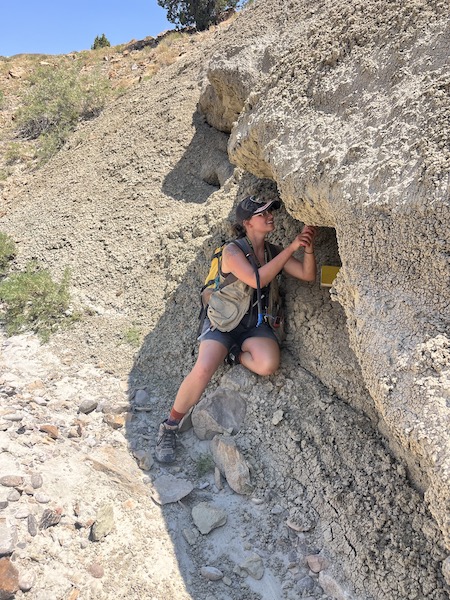Sands of Time: Research by ISU Professor, Students to Unravel Formation of Wyoming’s Green River Basin
November 11, 2024

A mystery millions of years in the making may be explained by a look at a few grains of sand.
The sands that hold the pieces to this puzzle being put together by Kurt Sundell, assistant professor of geology at Idaho State University, and his students are found in the southwest corner of Wyoming. Known today as the greater Green River Basin, this area was once under the waters of Lake Gosiute.
“Lake Gosiute was one of a group of mountain lakes that existed during the Eocene roughly 50 million years ago,” explained Sundell, an expert in geochronology. “This ancient lake went through several stages of expansion and contraction until it was ultimately filled with sediment over its almost ten million-year existence.”
The sediments caught by Lake Gosiute were being coughed up by volcanic eruptions in the Intermountain West. To the north, the volcanoes of the Absaroka Volcanic Province–which covers a portion of modern-day Yellowstone–and to the northwest, the Challis Volcanic Province–in Central Idaho–were belching rock and debris, and from there, the ancient rivers in each of the provinces carried the debris to Lake Gosiute.
“The Challis and Absaroka Volcanic Provinces were enormous and covered an area roughly the same size as Vermont,” said Sundell. “The volcanism in the western US at that time is similar to the Andes in South America today.”
The specific sediments of interest to Sundell and his students working on the project are called detrital zircons. These unusually hardy grains of sand formed from larger chunks of igneous rocks can take a beating while on the earth’s surface and are often deposited in sedimentary rocks.
“Detrital zircons are chemical time capsules and allow geologists to have a glimpse into earth processes occurring millions of years ago,” said Cheyenne Bartelt, a graduate student at ISU. “The composition of the zircon grains can tell us all sorts of things ranging from how long ago it formed to the detailed rock-forming processes it underwent. In this research, we are using it as a chemical tracer to determine what rocks eroded and where those source rocks are located.”
To unlock what happened in the Green River Basin and ancient Lake Gosiute, Sundell and Bartelt will head out to six different locations in the basin and measure the stratigraphy–the order and position of various rock layers—and collect rock samples at each. They’ll also travel to the modern rivers in the Challis and Absaroka Volcanic Provinces to collect samples. Once they have their samples, they’ll extract the zircons and, through laser ablation mass spectrometry, determine the age and the elements that compose each grain. But their work isn’t going to end with an identification of the sediments. By comparing the geochemical fingerprints of the zircons and through mixture modeling, researchers will be able to ascertain how much of the sediments found in the Green River Basin came from each of the volcanic provinces.
“What excites me most about geologic research is the ability to tell Earth’s stories from millions of years ago using a few grains of sand,” said Bartelt. “The results of this project will not only point to the source of the sediment but also how it was transported, what ancient rivers were flowing through the Intermountain West, and how other geologic features, such as mountains, worked together to create the Green River Basin we see today. The sedimentary composition of the basin has further implications for porosity and permeability of the stratigraphy, which are crucial factors in petroleum, helium, and groundwater extraction.”
Categories:
